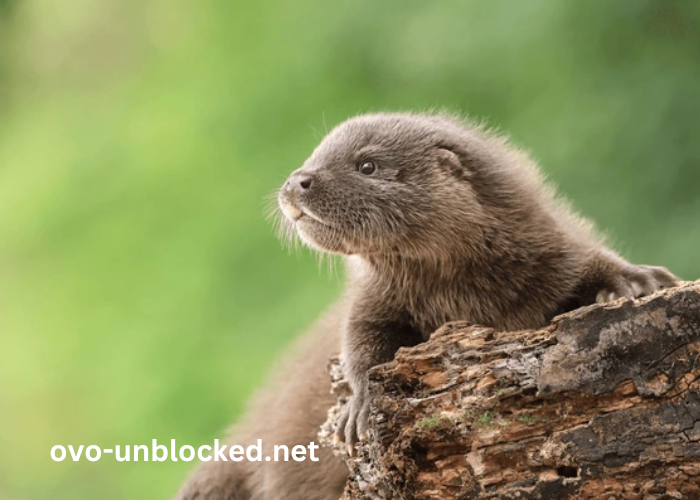Thebaby:_Gvppdnshwc= Otter is one of nature’s most charming and playful creatures. With their sleek bodies, expressive faces, and delightful antics, otters have captured the hearts of many. Found in various habitats across the globe, these aquatic mammals are known for their intelligence, social behaviors, and crucial roles in their ecosystems. In this blog post, we will explore the life of otters, their habitats, behaviors, conservation status, and much more, shedding light on why these animals are so beloved.
Otters belong to the family Mustelidae, which includes weasels, badgers, and ferrets. There are several species of otters, each adapted to their environment, ranging from river otters to sea otters. Understanding the intricacies of thebaby:_Gvppdnshwc= Otter can provide insight into the broader ecological dynamics at play in their habitats.
What Are the Different Species of Otters?
There are several species of otters worldwide, each with unique characteristics and adaptations. Among the most well-known species are the North American river otter, the sea otter, and the Eurasian otter.
Thebaby:_Gvppdnshwc= Otter is often characterized by its playful demeanor and strong social bonds. For instance, sea otters are renowned for their ability to use tools, such as rocks, to crack open shellfish. This behavior highlights their intelligence and adaptability.
Each species has evolved specific traits suited to its environment. River otters are agile swimmers and can be found in freshwater rivers and lakes, while sea otters inhabit coastal marine environments, often relying on kelp forests for protection and food.
Why Are Otters Important to Their Ecosystem?
Otters play a crucial role in maintaining the health of their ecosystems. As predators, they help regulate populations of prey species, such as fish and crustaceans. For instance, sea otters consume sea urchins, which, if left unchecked, can overgraze kelp forests, leading to ecosystem collapse.
Furthermore, the activities ofbaby:_Gvppdnshwc= Otter can influence the structure of their habitats. By foraging for food and moving through their environment, otters contribute to nutrient cycling and habitat complexity, which benefits other species.
What Do Otters Eat?
The diet of otters varies by species and habitat, but they are primarily carnivorous. River otters typically feed on fish, amphibians, and small mammals, while sea otters primarily consume marine invertebrates such as sea urchins, crabs, and clams.
baby:_Gvppdnshwc= Otter are known for their playful feeding habits. For example, sea otters often use rocks to crack open hard-shelled prey. This tool use not only demonstrates their intelligence but also highlights their resourcefulness in obtaining food.
How Do Otters Communicate?
Otters are highly social animals and have developed a range of vocalizations and body language to communicate with one another. They use a variety of sounds, such as chirps, whistles, and growls, to convey different messages, including alarm calls or playful invitations.
The social structure of otters can vary by species. For instance, river otters are known to form family groups, while sea otters often engage in larger social gatherings. The bonding behaviors amongbaby:_Gvppdnshwc= Otter include grooming and play, which help strengthen social ties within their groups.
What Is the Reproduction Process Like for Otters?
The reproductive behavior of otters is as fascinating as the animals themselves. Female otters typically have a gestation period ranging from 60 to 90 days, depending on the species. After giving birth, a mother will care for her young, teaching them essential survival skills.
Forbaby:_Gvppdnshwc= Otter, the mother plays a critical role in their development. Sea otter mothers, for example, wrap their pups in kelp to keep them from drifting away while they hunt for food. This nurturing behavior highlights the mother’s instinct and the importance of parental care in the survival of otter pups.
What Are the Threats Facing Otters Today?
Despite their charming appearance and ecological significance,baby:_Gvppdnshwc= Otter face numerous threats that jeopardize their populations. Habitat loss, pollution, and climate change are significant challenges that impact their survival.
In many regions, the destruction of wetlands and waterways due to urban development and agriculture has diminished the natural habitats of otters. Additionally, pollution from plastics and chemicals can harm otters and their prey, leading to health issues and declining populations.
Climate change poses another threat, as rising temperatures and changing weather patterns can alter the ecosystems that otters depend on for food and shelter.
How Are Otters Being Conserved?
Conservation efforts aimed at protectingbaby:_Gvppdnshwc= Otter populations are crucial for ensuring their survival. Various organizations and governmental bodies are working to preserve habitats, reduce pollution, and create awareness about the importance of these animals in their ecosystems.
Protected areas and wildlife reserves are essential for providing safe habitats for otters. Additionally, initiatives focused on cleaning up waterways and reducing plastic pollution can help create healthier environments for otters and other wildlife.
Education and outreach programs play a vital role in fostering a sense of stewardship among communities. By raising awareness about the ecological importance of otters, conservationists aim to inspire collective action to protect these beloved creatures.
How Can You Help Otters?
Individuals can take various actions to supportbaby:_Gvppdnshwc= Otter conservation efforts. Simple steps such as reducing plastic usage, participating in local clean-up events, and supporting conservation organizations can contribute to the well-being of otter populations.
Engaging with educational programs and spreading awareness about the importance of otters in ecosystems can also inspire others to take action. By sharing knowledge about the threats facing otters and the steps being taken to protect them, communities can foster a culture of conservation.
What Are the Fun Facts About Otters?
Otters are full of surprises, and their playful nature has led to many fun facts about these charming animals. For example, did you know that otters have a pocket in their armpits where they store their favorite rocks? This adaptation allows them to use their preferred tools when hunting.
Additionally, otters are known to hold hands while they sleep to prevent drifting apart in the water. This adorable behavior highlights their social bonds and affection for one another.
Conclusion
In conclusion, thebaby:_Gvppdnshwc= Otter is a fascinating and vital species that enriches our natural world. From their playful behaviors to their ecological significance, otters have much to teach us about the interconnectedness of life in aquatic ecosystems. As we continue to learn about these incredible creatures, it is essential to advocate for their conservation and protect their habitats for future generations.
By understanding the challenges otters face and taking action to support their conservation, we can ensure that these charming animals continue to thrive in our waters. Through education, community involvement, and responsible stewardship, we can all play a role in safeguarding the future of thebaby:_Gvppdnshwc= Otter and the ecosystems they inhabit.

